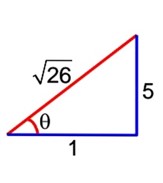Class 11th
Get insights from 8k questions on Class 11th, answered by students, alumni, and experts. You may also ask and answer any question you like about Class 11th
Follow Ask QuestionQuestions
Discussions
Active Users
Followers
New answer posted
3 months agoContributor-Level 10
Due to higher extent of polarization by Li+ and Mg2+, LiCl and Mgcl2 have covalent character. Therefore they are soluble in ethanol.
Due to very high value of lattice energy, LiF is having very less solubility in water.
New answer posted
3 months agoContributor-Level 10
The highest industrial consumption of hydrogen gas is in the synthesis of ammonia gas (Having manufacturing of N-based fertizers)
New answer posted
3 months agoContributor-Level 10
The highest industrial consumption of hydrogen gas is in the synthesis of ammonia gas (Having manufacturing of N-based fertizers)
New question posted
3 months agoNew answer posted
3 months agoContributor-Level 10
In 4d orbital, n = 4 and
Radial nodes =
Radial nodes = 4 – 2 – 1 = 1
And angular nodes,
New answer posted
3 months agoContributor-Level 10
y = x5 (1 – x) = x tan θ
tan = 5, R = 1
y – component of initial velocity
= u sin θ
=
= 5 m/s
Taking an Exam? Selecting a College?
Get authentic answers from experts, students and alumni that you won't find anywhere else
Sign Up on ShikshaOn Shiksha, get access to
- 65k Colleges
- 1.2k Exams
- 679k Reviews
- 1800k Answers


